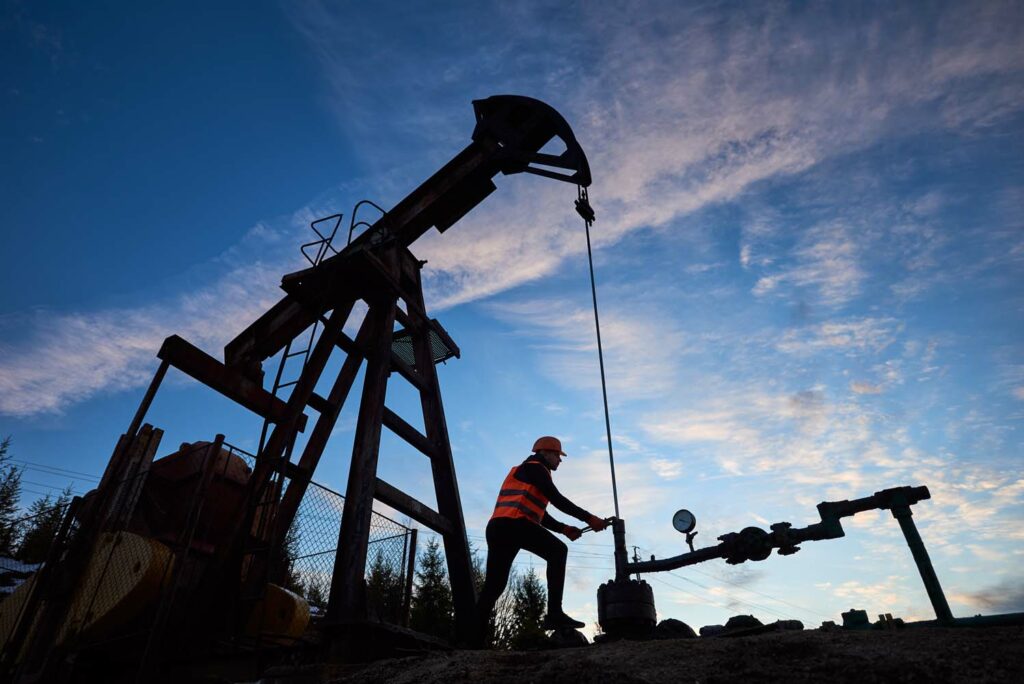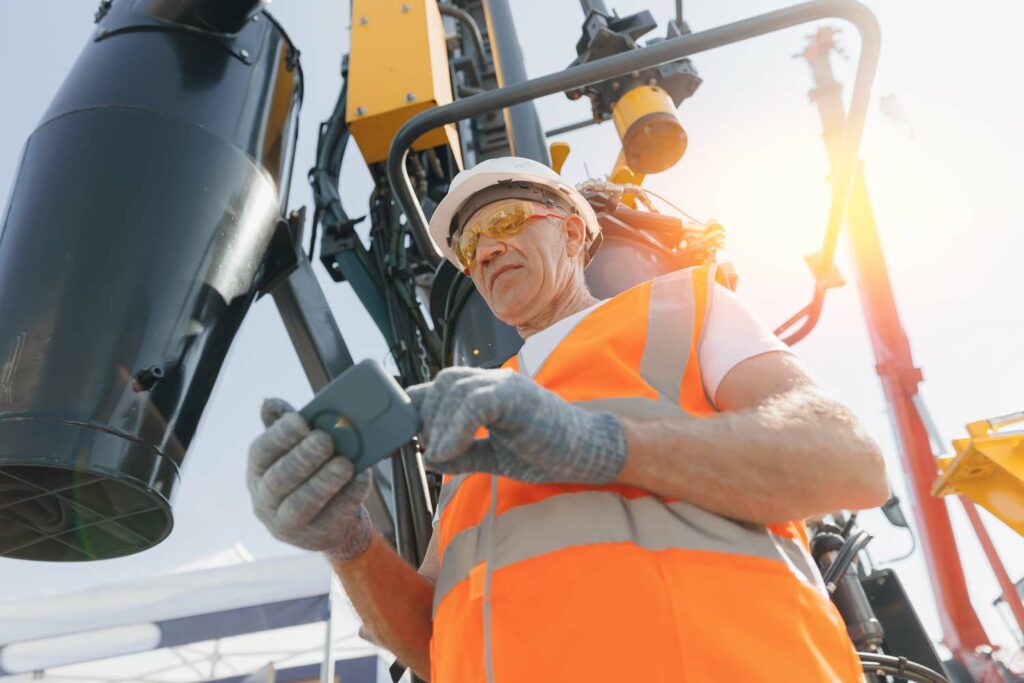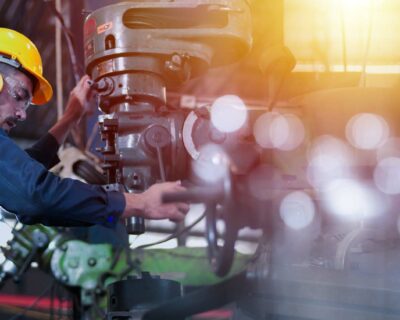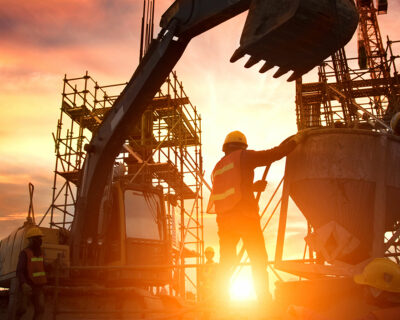
Oil Rig Safety Statistics: Navigating the Data for the Future
The oil and gas industry, notorious for its high-risk environments, requires stringent safety measures to protect its workforce and the environment. This article delves into the critical oil rig safety statistics, reviewing past and present safety and how modern practices play a pivotal role in mitigating risks.
Explore this Article:
- Historical Overview of Oil Rig Safety
- Changes for the Better
- Present-Day Safety Statistics
- Safety Statistics: A Deeper Dive
- The Future of Oil Rig Safety
Historical Overview of Oil Rig Safety
Let’s take a look at how safety on oil rigs has changed over time.
A Look Back in Time
Years ago, working on an oil rig was even more dangerous than it is today. People didn’t have as much trial-by-fire experience and there weren’t as many rules to keep workers safe, so it was up to the workers themselves to find the safest practices.
- Big Accidents: In the early 1900s, drilling technology was primitive and lacked the advanced safety mechanisms we have today, such as blowout preventers. This absence of safety features became evident at Lakeview Gusher on March 15, 1910, when, upon reaching a depth of 2,440 feet (about 740 meters), pressurized oil surged through the casing above the drill bit. This event led to a massive spill, with an estimated 9 million barrels (approximately 1.4 million cubic meters) of oil being released until the flow was finally contained in September 1911.
- Learning from Mistakes: After this and other accidents, people started to understand more about safety. They began to see that better training, more safety equipment, and stricter rules could help prevent accidents.

Changes for the Better
Over the years, things have started to get better. People in Texas and all over the world worked hard to make oil rigs safer places.
- More Rules: Texas and other places made more rules to protect workers and the environment. These rules made sure that oil rigs had the right equipment and that workers knew how to stay safe.
- Better Equipment: The equipment used on oil rigs got a lot better, too. New technology helped workers do their jobs without getting hurt.
Texas Takes the Lead
Texas is a big player in the oil and gas world, so what happens here can set an example for other places. Texas has worked hard to improve safety on oil rigs by:

- Keeping Track of Accidents: Texas started keeping better records of when and why accidents happened. This helped people understand how to prevent them in the future.
- Teaching Workers: Training programs got better, teaching workers how to stay safe and what to do if something goes wrong.
Looking at the Numbers
Even with these improvements, accidents still happen, but the numbers show that things are getting safer. Reports from Texas show that serious accidents on oil rigs have gone down over the years.
Present-Day Safety Statistics
In the world of oil rig safety, numbers tell a powerful story. Today’s safety statistics highlight significant improvements, driven by better technology, training, and regulatory oversight. Let’s examine the current state of oil rig safety through a lens of data, reflecting global trends and achievements.
Improvement in Safety Numbers
- Reduction in Accidents: According to data from the Bureau of Safety and Environmental Enforcement (BSEE), the total number of reported offshore incidents in the United States has seen a downward trend over the past decade. For example, in 2010, there were approximately 120 reported incidents, compared to under 50 in recent years.
- Decrease in Injury Rates: The Occupational Safety and Health Administration (OSHA) reports that the injury and illness rates in the oil and gas extraction industry have decreased from around 4.5 per 100 full-time workers in 2010 to about 1.5 in the most recent years.
Technological Advancements and Training
The integration of new technologies and rigorous training programs has been a game-changer for improving safety on oil rigs.
- Advanced Safety Equipment: Modern safety equipment and wearables have contributed to reducing accidents. For instance, the use of gas detection devices and automatic shutdown systems has led to a noticeable decrease in hazardous exposure incidents.
- Safety Software or EHS Software: EHS Software helps with training /learning management, risk assessments, and many more features that can help consolidate the data and give companies a big picture from which they can observe trends and problems.
- Impact of Simulation Training: Simulation-based training methods have become more common, allowing workers to experience and react to potential hazards in a controlled environment. This has been linked to a reduction in human error-related incidents.
Regulatory Impact
Enhanced regulations and stricter compliance measures have played a critical role in improving safety standards.
- Stricter Regulations Lead to Fewer Incidents: The implementation of stricter safety regulations by bodies like BSEE and OSHA has correlated with a reduction in serious incidents. Following major regulatory overhauls after high-profile accidents, compliance with safety standards has improved, reflecting in lower incident rates.

A Closer Look at Numbers
- Improvement Post-Regulation Changes: Post-2010, after the implementation of more stringent safety measures, there was a significant drop in the rate of serious incidents and fatalities. For instance, fatality rates in the industry decreased from 0.008 per 100 workers in 2010 to 0.005 in recent years.
- Decrease in Oil Spill Incidents: Efforts to improve environmental safety have also seen success, with the number of large oil spills (over 700 barrels) decreasing globally from an average of 24 per year in the 1970s to fewer than 2 per year in the last decade.
Safety Statistics: A Deeper Dive
Understanding the nuances of oil rig safety requires a closer look at the types of accidents that occur, their causes, and the impactful role of data analysis in mitigating these risks. This section delves into the specifics, offering insights backed by statistics.
Common Types of Accidents and Their Causes
- Slips, Trips, and Falls: These are among the most common accidents on oil rigs, often caused by wet or slippery surfaces, obstacles in walkways, and unsafe working practices.
- Equipment-Related Incidents: From malfunctions to misuse, equipment issues are a significant source of accidents. Regular maintenance and proper training can mitigate these risks.
- Explosions and Fires: Although less common, these are among the most severe accidents, often resulting from the ignition of flammable gases or liquids.
Human Error vs. Equipment Failure
- Human Error: A substantial proportion of incidents can be traced back to human error, including lack of attention, non-compliance with safety protocols, or inadequate training.
- Equipment Failure: Equipment malfunction, while less frequent as a primary cause, significantly contributes to accidents, especially when combined with human error.
Role of Data Analysis in Safety
Data analysis has become a cornerstone in identifying and mitigating risks on oil rigs. By examining incident reports, companies can identify patterns and implement targeted safety measures.
- Statistics on Incident Reduction: Studies have shown that after the implementation of data-driven safety measures, the rate of certain types of accidents, such as slips, trips, and falls, has decreased by up to 20%. Equipment-related incidents saw a reduction of around 15% with the introduction of regular maintenance schedules and enhanced training programs.

The Future of Oil Rig Safety
Looking forward, the landscape of oil rig safety is poised for further advancements, driven by technology, regulatory changes, and an evolving understanding of risk management.
Evolution of Safety Measures and Technology
- Wearable Tech: The future will likely see a broader adoption of wearable technology that monitors workers’ health and environmental conditions, alerting them to potential hazards.
- Automation and Robotics: To minimize human exposure to dangerous situations, the use of automated systems and robotics will increase, handling tasks in hazardous environments.
Increasing Importance of EHS Software
EHS (Environmental, Health, and Safety) software is set to play an even more crucial role in oil rig safety. Its capabilities for predictive analytics and prevention strategies are advancing rapidly.
- Predictive Analytics: By analyzing data patterns, EHS software can predict potential incidents before they occur, enabling pre-emptive measures.
- Prevention Strategies: Integration of EHS software into daily operations facilitates the development of more effective safety protocols and training programs.
Upcoming Regulations and Standards
Regulatory bodies worldwide are continuously updating safety standards to reflect technological advancements and lessons learned from past incidents.
- Stricter Compliance: Future regulations are expected to demand higher compliance with safety protocols, particularly in the areas of environmental protection and worker health monitoring.
- Global Standards: There’s a move towards harmonizing safety standards across borders, making it easier for multinational companies to implement consistent safety measures.






























